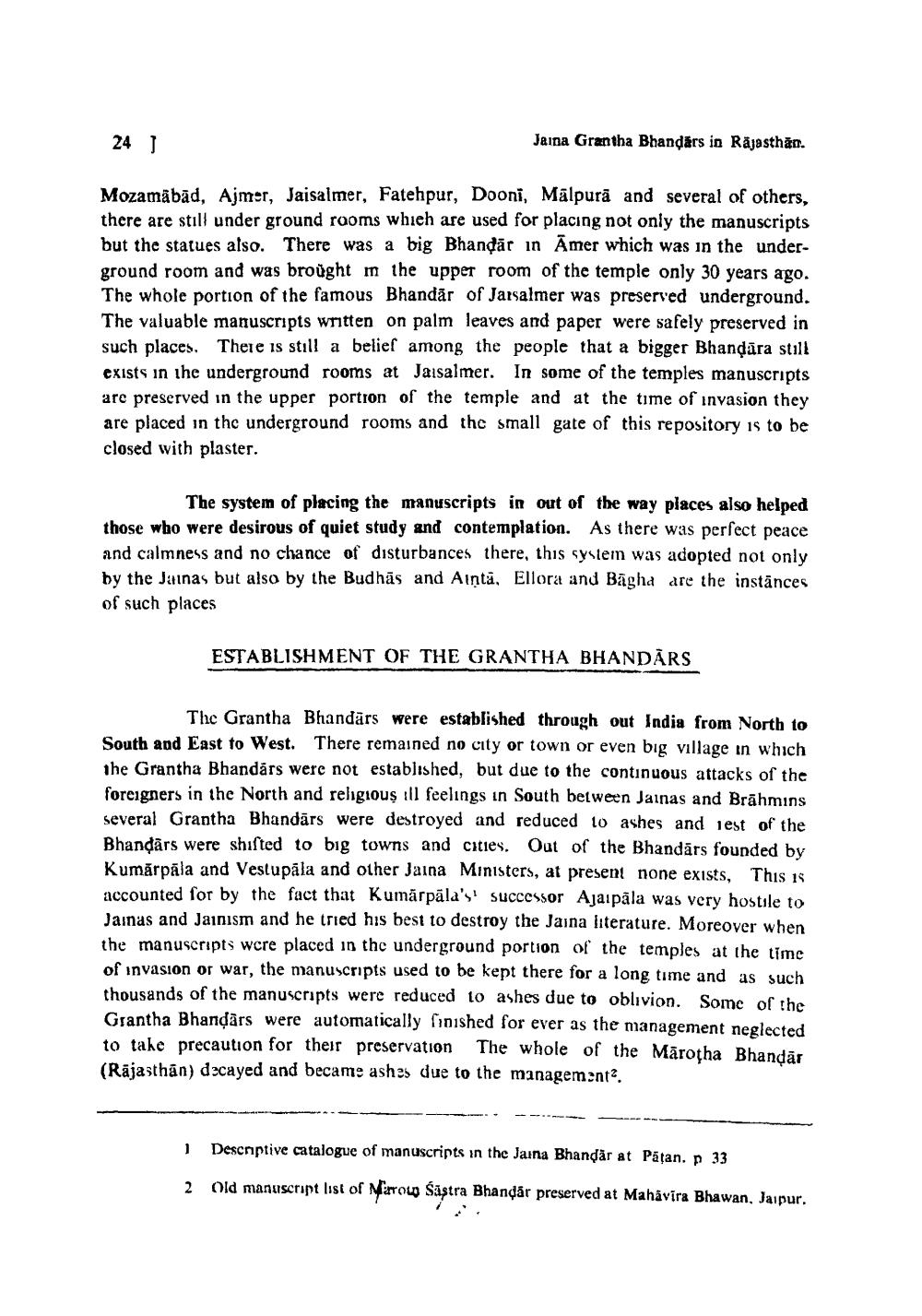________________
24 )
Jaina Grantha Bhandārs in Rajasthan.
Mozamābād, Ajmer, Jaisalmer, Fatehpur, Dooni, Mālpurā and several of others, there are still under ground rooms which are used for placing not only the manuscripts but the statues also. There was a big Bhandār in Amer which was in the underground room and was brought m the upper room of the temple only 30 years ago. The whole portion of the famous Bhandār of Jarsalmer was preserved underground. The valuable manuscripts written on palm leaves and paper were safely preserved in such places. There is still a belief among the people that a bigger Bhandara still exists in the underground rooms at Jaisalmer. In some of the temples manuscripts are preserved in the upper portion of the temple and at the time of invasion they are placed in the underground rooms and the small gate of this repository is to be closed with plaster.
The system of placing the manuscripts in out of the way places also helped those who were desirous of quiet study and contemplation. As there was perfect peace and calmness and no chance of disturbances there, this system was adopted not only by the Jainas but also by the Budhās and Ainta, Ellora and Bāgha are the instānces of such places
ESTABLISHMENT OF THE GRANTHA BHANDĀRS
The Grantha Bhandārs were established through out India from North to South and East to West. There remained no city or town or even big village in which the Grantha Bhandārs were not established, but due to the continuous attacks of the foreigners in the North and religious ill feelings in South between Jainas and Brāhmins several Grantha Bhandārs were destroyed and reduced to ashes and nest of the Bhandārs were shifted to big towns and cities. Out of the Bhandārs founded by Kumārpāla and Vestupāla and other Jaina Ministers, at present none exists. This is accounted for by the fact that Kumārpāla's successor Ajaipāla was very hostile to Jainas and Jainism and he tried his best to destroy the Jaina literature. Moreover when the manuscripts were placed in the underground portion of the temples at the time of invasion or war, the manuscripts used to be kept there for a long time and as such thousands of the manuscripts were reduced to ashes due to oblivion. Some of the Grantha Bhandars were automatically finished for ever as the management neglected to take precaution for their preservation The whole of the Mārotha Bhandar (Rajasthan) decayed and became ashes due to the management
1
Descriptive catalogue of manuscripts in the Jaina Bhandar at Patan. p 33
2
Old manuscript list of Mirou śāstra Bhandar preserved at Mahavira Bhawan, Jaipur.




